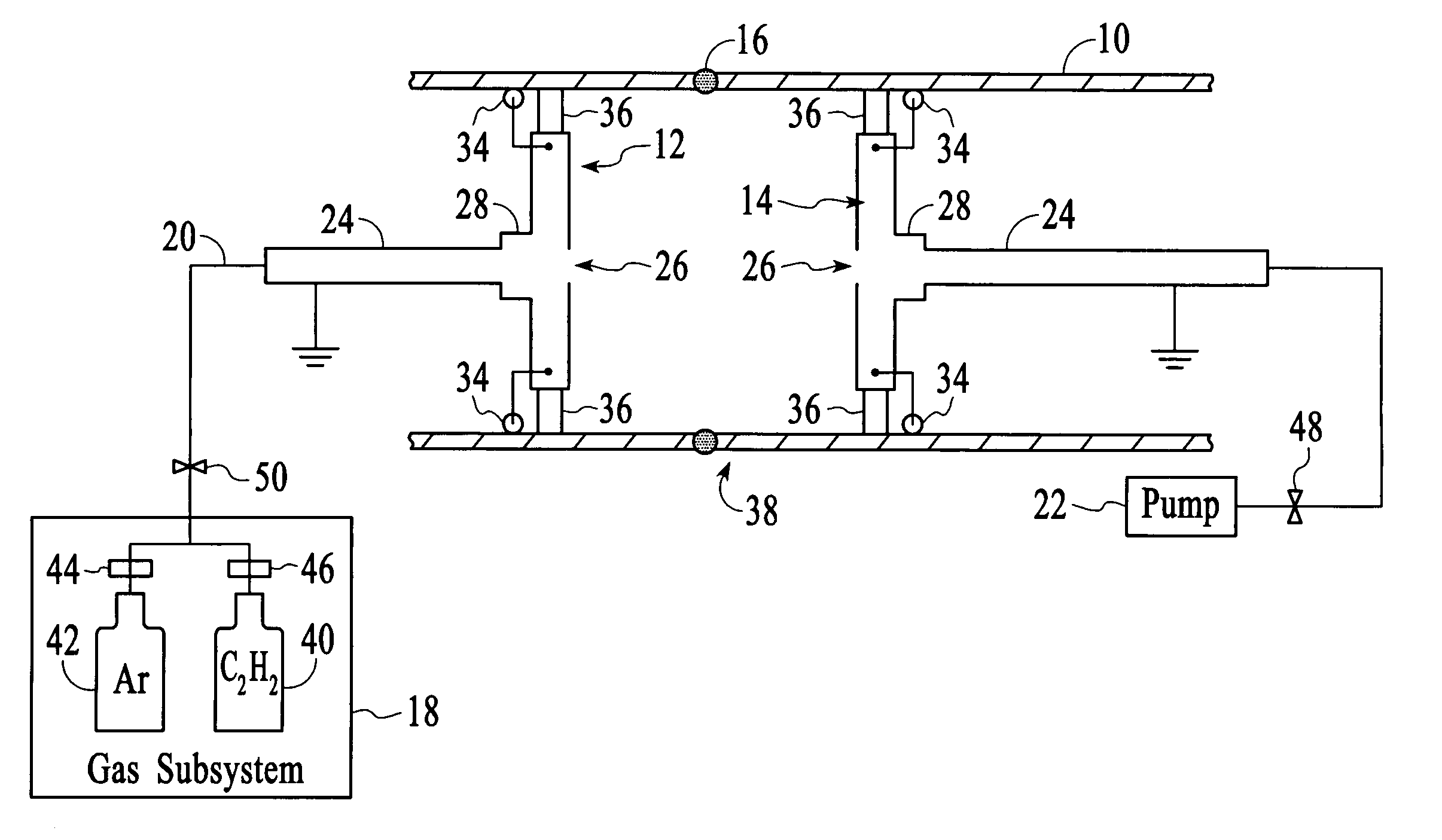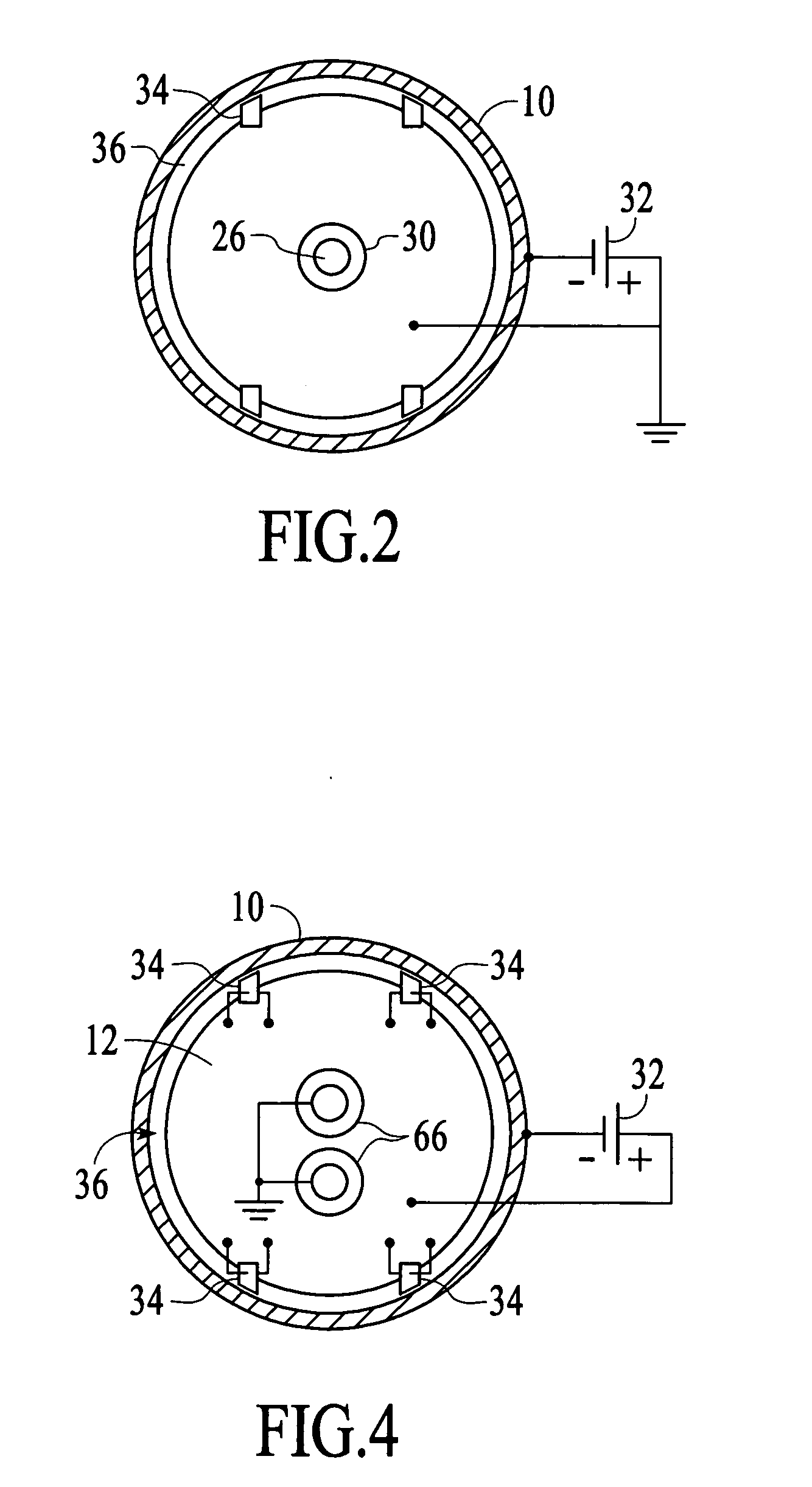Method and system for coating sections of internal surfaces
a technology of internal surface and coating section, applied in the direction of vacuum evaporation coating, solid-state diffusion coating, mechanical equipment, etc., can solve the problems of multiple ionizing collisions, increased coating time, and inability to use heat-sensitive substrates with thermal techniques, so as to reduce the total coating time, improve uniformity, and increase the length of the section
- Summary
- Abstract
- Description
- Claims
- Application Information
AI Technical Summary
Benefits of technology
Problems solved by technology
Method used
Image
Examples
Embodiment Construction
[0028]FIG. 1 shows a conductive workpiece 10 very long in length, for example having a length-to-diameter ratio greater than 50:1. The conductive workpiece may be an assembly of sections welded together to form long lengths of pipe, but may also be a single high aspect ratio piece. Often, sections of pipe, having already been coated and having a uniform coating, are welded together. The welds and the areas surrounding the welds, in which the welding process has compromised the coating, require corrosion-resistant coating.
[0029]The conductive structures 12 and 14 are inserted into workpiece openings (not shown) and maneuvered into position at or near weld 16. The conductive structure 12 is coupled to a gas supply subsystem 18 via flexible gas supply line 20. The conductive structure 14 is coupled to a pumping subsystem 22via flexible pump lines 24. The gas supply and pump lines are connected to openings 26 (FIG. 2) by vacuum-tight fittings 28 by a means known in the art. The gas supp...
PUM
| Property | Measurement | Unit |
|---|---|---|
| aspect ratio | aaaaa | aaaaa |
| aspect ratio | aaaaa | aaaaa |
| pressures | aaaaa | aaaaa |
Abstract
Description
Claims
Application Information
 Login to View More
Login to View More - R&D
- Intellectual Property
- Life Sciences
- Materials
- Tech Scout
- Unparalleled Data Quality
- Higher Quality Content
- 60% Fewer Hallucinations
Browse by: Latest US Patents, China's latest patents, Technical Efficacy Thesaurus, Application Domain, Technology Topic, Popular Technical Reports.
© 2025 PatSnap. All rights reserved.Legal|Privacy policy|Modern Slavery Act Transparency Statement|Sitemap|About US| Contact US: help@patsnap.com



